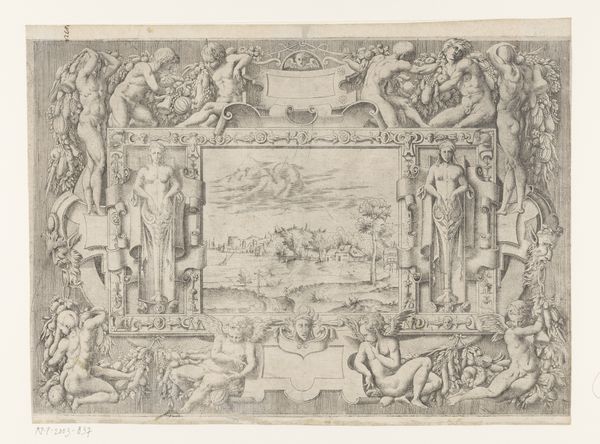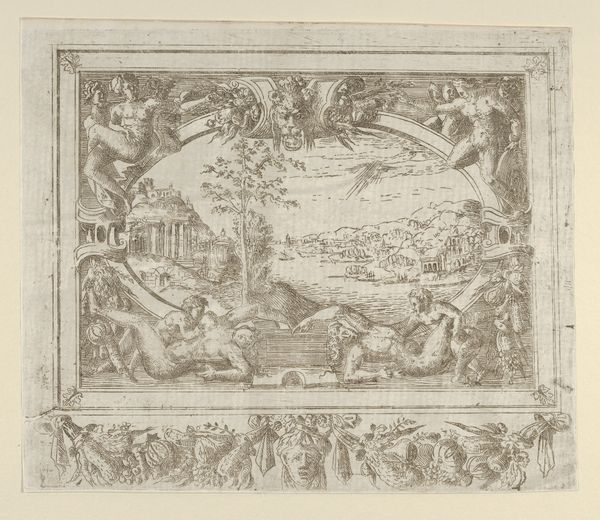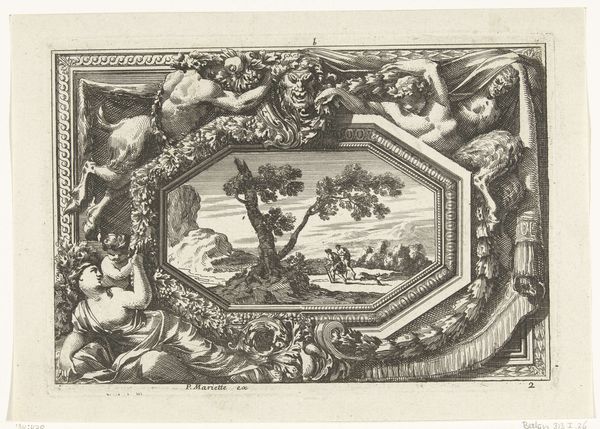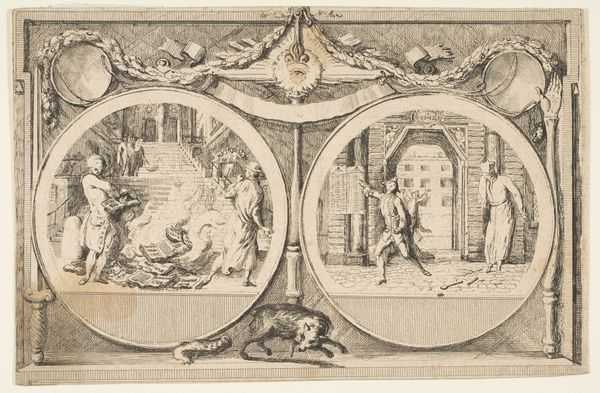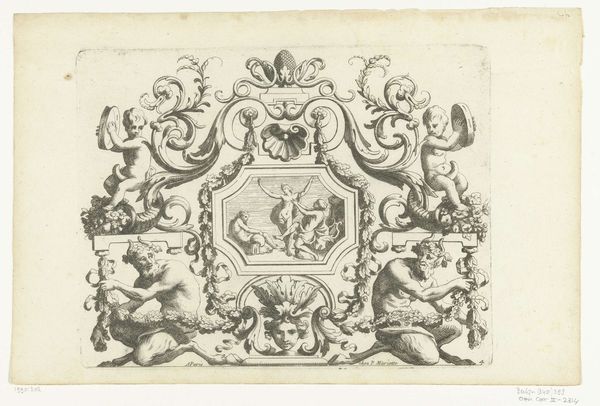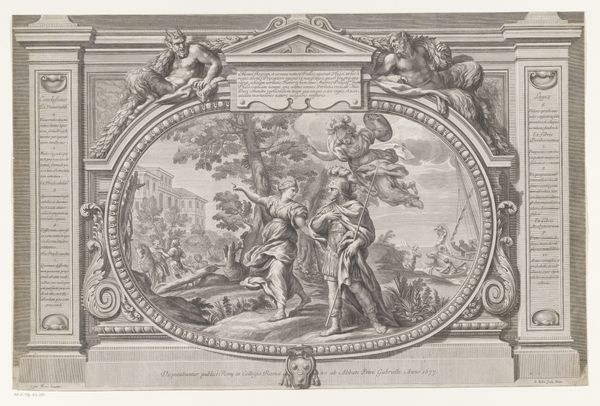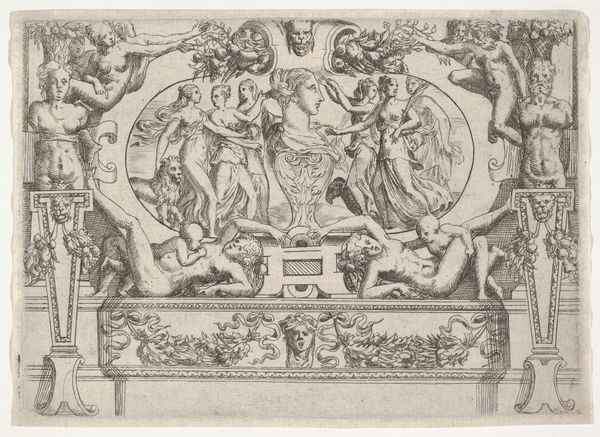
etching
#
pen drawing
#
etching
#
landscape
#
genre-painting
Dimensions: height 138 mm, width 246 mm
Copyright: Rijks Museum: Open Domain
Curator: Here we have a pen drawing by Jean Louis Demarne, created sometime between 1762 and 1829, titled "River Landscape with a Tree in a Cartouche with Satyrs"—an intriguing combination, isn't it? Editor: It is! My first thought is it has a very theatrical feel, like a scene on a stage, meticulously framed. The use of light and shadow is striking; what immediately jumps out is that sense of an almost dreamlike escape into nature. Curator: Exactly. Demarne’s use of satyrs in the cartouche lends a powerful mythological symbolism to the composition, almost turning it into an arcadian vision, where nature is both refuge and domain of pagan figures. Consider how cartouches themselves signify status and declarations; here, it elevates a simple river landscape into an allegorical scene. We can almost read into its implicit power dynamics between different spheres. Editor: Oh, I agree, and consider the enduring symbolism of satyrs. In Renaissance and later art, they are often stand-ins for unbridled desires, liminal figures dancing between the human and the wild. Their presence here suggests an invitation to the viewer to transgress the boundary of civilized constraint and enter a more liberated, albeit potentially chaotic, state of being. This etching acts as an intermediary step into the freedom of natural expression. Curator: Moreover, look at the landscape depicted within the frame. It is not simply a realistic representation, but an idealized space, imbued with leisure and classical repose: note the figure in contemplation beneath the large, dominant tree. How might that element of class structure and the elite contrast or connect with what is suggested by those wild figures inhabiting the frame? Editor: Very good question! Perhaps Demarne uses that contrast intentionally, indicating not just social or financial privilege but also suggesting an engagement with self-exploration within a tamed natural world. Or perhaps, and rather less gently, he insinuates that all these civilized landscapes are essentially fictions, framed by human wilder urges and social performances we project into that wild. Curator: I find that very astute. What’s clear is that even in a seemingly simple genre scene such as this, Demarne weaves a very compelling narrative of human culture. Editor: Absolutely. It leaves me contemplating our role in shaping the natural world but it makes me think about our relationship with ancient cultural narratives.
Comments
No comments
Be the first to comment and join the conversation on the ultimate creative platform.
